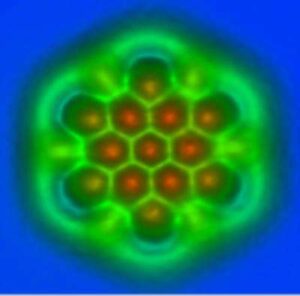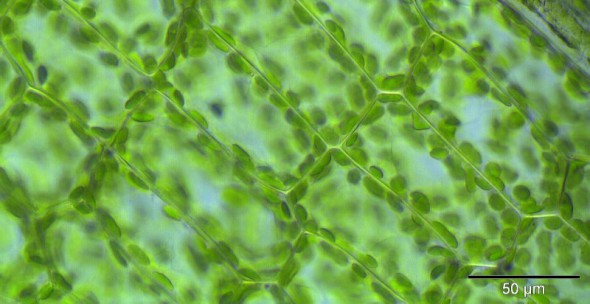What is femtobiology?
We can figure out the literal femtobiology definition very easily, of course- femto from the Danish femten, meaning “fifteen”, as in, a femtometer being 10-15 the size of a regular meter. Biology is from the Greek bios, meaning life, and logia, meaning “study of”.
So the definition of femtobiology is the study of life at size-scales or time-scales around the order of 10-15.
(Incidentally, the above image is from an outline of cell biology, which is of course many thousands of times too large.)
But wait. Isn’t that a little small for life? After all, a virus- which is only psuedo-life in the first place– is around 400 nanometers big.
That’s 400,000,000 femtometers.
Shouldn’t we be talking about nanobiology instead? Isn’t the scale of femtoscience too small to contain anything that can meaningfully be called life?
Femtobiology in Size and Spatial Dimensions

Well, yes. Life on Planet Earth is carbon based, and a carbon atom is 140,000 femtometers in diameter. As a comparison, if the carbon atom were the size of the whole planet, a femtometer would be about a hundred yards – a little less than a football field.
So what, then, can we say about femtobiology?
You may have heard the old saying that biology is just applied chemistry, chemistry is just applied physics, and physics is just applied math. In this case, femtobiology is femtochemistry applied to biological reactions.
Most (if not all) biological functions are initiated or conducted through chemical transfers, including the movement of electrons, protons, and energy.
So, understanding these chemical and physical reactions will lead to a better understanding of biological interactions at both femtometer magnitudes as well as more easily observable macroscopic scales.
Femtosecond Biology: Ultrashort Intervals in Time
The other way of approaching biology through femtoscience bears even more fruit. Using ultrashort pulse laser technology, biologists can peer into known biological reactions at shorter time intervals than ever before.
There are multitudes of chemical processes vital to biology that happen at the nanosecond, picosecond, femtosecond, and attosecond range. (The shortest time interval ever measured at the time of this article, by the way, is 12 attoseconds.)
In fact, there’s already a textbook introducing advanced bio students to these new ideas- check out Femtochemistry and Femtobiology: Ultrafast Events in Molecular Science by Monique M. Martin and James T. Hynes.
But what are examples of specific processes and functions that are now better understood because of these techniques?
- Protein Folding Speed Limit
- Femtosecond Enzyme Dynamics
- DNA Folding and Melting
- RNA-Protein Recognition
- Macromolecule Hydration Dynamics
- And plenty others.
When we observe these molecular interactions at such extremely short time intervals, we can see what’s going on in a whole new light. In providing us with better insight into even these extremely small events, we can expand on these findings and use them to learn more about the larger processes that they comprise.
In essence, femtobiology gives us another new way to learn a little more about ourselves.
Conclusion
As we’ve discussed, the scale of femtoscience is too small to meaningfully contain any sort of life on its own- at least life as far as we know it.
But using specialized techniques related to femtoscience does open up new paths of discovery that biology on a larger scale can benefit from – and indeed, it already has.
This is the absolute forefront of molecular biology, so it’s a guarantee that we’re only going to learn more as time goes on.
Did we miss anything? Let us know in the comments below!


Fascinating!